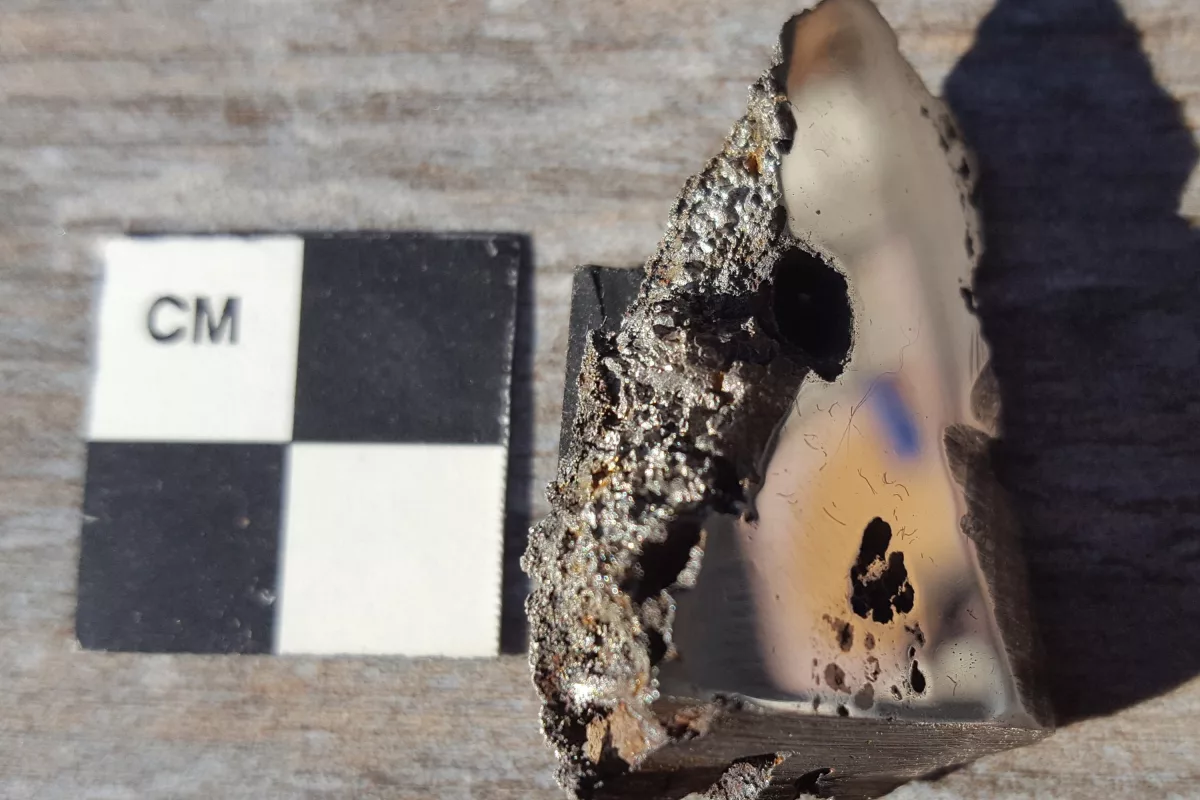Scientists have discovered at least two new minerals inside one of the largest meteorites ever found. The iron-based minerals have never been spotted in nature, and could hint at unknown geological processes and new material uses.
The two new minerals were discovered in a meteorite found in El Ali, Somalia. This huge rock weighs as much as 17 tons, placing it in the top 10 largest meteorites on Earth. While it was only found by scientists in 2020, locals have stories of what they call “Nightfall” going back generations.
A small, 70-gram (2.5-oz) fragment of the meteorite was sent to scientists at the University of Alberta to classify the minerals that make it up. And within the very first day of analysis, the team identified two brand new minerals in the sample.
The first was named elaliite, after the town near where the meteorite was found, while the second was dubbed elkinstantonite, after Lindy Elkins-Tanton, the principal investigator of NASA’s Psyche mission. Both minerals are made up of iron, polonium and oxygen.
The quick turnaround for identifying the new minerals came because they’d actually already been synthetically produced in the lab, as far back as the 1980s. Their composition and crystal structures could be quickly matched to this existing data, rather than classified from scratch. And while you might argue that this doesn’t make them “new” minerals, officially they can’t be classed as such until they’re found in nature.
The team says that elaliite and elkinstantonite could help point to new geological and chemical processes, and may eventually unlock new material applications.
“Whenever you find a new mineral, it means that the actual geological conditions, the chemistry of the rock, was different than what’s been found before,” said Chris Herd, curator of the University of Alberta’s Meteorite Collection. “That’s what makes this exciting: In this particular meteorite you have two officially described minerals that are new to science. Whenever there’s a new material that’s known, material scientists are interested too because of the potential uses in a wide range of things in society.”
A possible third new mineral is currently under consideration by experts. Further analysis of other samples could reveal even more new ones, but frustratingly the original meteorite seems to have disappeared. Rumor has it that the rock has been moved to China where it could be awaiting sale. Wherever it ends up, hopefully more samples will be made available to scientists.
Herd presented the findings at the Space Exploration Symposium at the University of Alberta on November 21.
Source: University of Alberta




